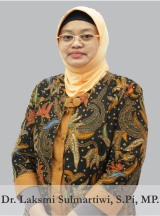Collagen Extraction from Red Snapper (Lutjanus malabaricus) Scales via Hydroextraction: Toward Nanocollagen Development
Downloads
Generally, collagen is isolated using acid, base and enzymatic hydrolysis methods. However, this has the constraint of the length of time for the release of procollagen to produce collagen. Acetic acid hydrolysis combined with the hydroextraction method is one alternative to produce quality collagen. The use of acetic acid in the extraction of red snapper scales (Lutjanus malabaricus) will produce H+ ions to release procollagen in the raw material. The study aims to evaluate the potential of red snapper (L. malabaricus) scales as a collagen source through the hydroextraction method for the development of nanocollagen formulations. This study used a completely randomized design (CRD). Isolation of red snapper scales collagen using acetic acid solvent concentrations of 1 M; 1.5 M and 2 M with a hydrolysis time of 2 hours and hydroextraction for 2 hours with three repetitions. The parameters observed in this study were the proximate of collagen raw materials, collagen yield, and collagen amino acids. The data analysis results were tested statistically using Analysis of Variance (ANOVA) followed by Tukey's further test. The best result of collagen isolation from red snapper (L. malabaricus) scales was achieved using 2 M acetic acid hydrolysis combined with hydroextraction. This study demonstrated that the combination of different acetic acid concentrations with hydroextraction had a significant effect (P<0.05) on collagen yield parameters. The amino acid content consisted of 22.37% glycine and 12.45% proline. These findings indicate that red snapper (L. malabaricus) scales have the potential to be developed as a raw material for nanocollagen developments.
References
Adnan, H. M., Ridzwan, A., & Rusop, R. (2019). Extraction and characterization of fish collagen for biomedical application. Journal of Physics: Conference Series, 1149(012099).
Akram, A. N., & Zhang, C. (2020). Effect of ultrasonication on the yield, functional and physicochemical characteristics of collagen-II from chicken sternal cartilage. Food Chemistry, 307(125544).
AOAC. Association of Official Analytical Chemist. (2005). Official Methods of Analysis. 18 ed. Maryland: Association of Official Analytical Chemist Inc.
AOAC. Association of Analytical Chemists. (2012). Official Methods of Analysis of AOAC International. 19th ed. Washington DC.
Asaduzzaman, A. K. M., Getachew, A. T., Cho, Y. J., Park, J. S., Haq, M., & Chun, B. S. (2020). Characterization of pepsin-solubilised collagen recovered from mackerel (Scomber japonicus) bone and skin using subcritical water hydrolysis. International Journal of Biological Macromolecules, 148:1290-1297.
Atef, M., Ojagh, S. M., Latifi, A. M., Esmaeili, M., & Udenigwe, C. C. (2020). Biochemical and structural characterization of sturgeon fish skin collagen (Huso huso). Journal of Food Biochemistry, 44(e13256).
Bai, Y., Xu, K., Meng, Y., Dong, X., Liu, W., & Li, B. (2019). Changes in structure and properties of silver carp skin collagen subjected to different acid treatments. Food Hydrocolloids, 89:563-570.
Blanco, M., Vázquez, J. A., Pérez-Martín, R. I., & Sotelo, C. G. (2019). Collagen extraction optimization from the skin of the small-spotted catshark (S. canicula) by response surface methodology. Marine Drugs, 17(40):1-13.
Chen, Y., Huang, C., Huang, C., Huang, C., Wang, M., Chen, J., ... & Zhou, C. (2018). Preparation and characterization of collagen from tilapia (Oreochromis mossambicus) scales and its potential application in promoting burn wound healing. Journal of the Science of Food and Agriculture, 98(5):1930-1937.
Chen, J., Li, L., Yi, R., Xu, N., Gao, R., & Hong, B. (2016). Extraction and characterization of acid-soluble collagen from scales and skin of tilapia (Oreochromis niloticus). LWT-Food Science and Technology, 66:453-459.
Cutajar, N., Lia, F., Deidun, A., Galdies, J., Arizza, V., & Zammit Mangion, M. (2022). Turning waste into a resource: isolation and characterization of high ‐ quality collagen and oils from atlantic bluefin tuna discards. Applied Sciences, 12(3).
Fabella, N., Herpandi, H., & Widiastuti, I. (2018). Pengaruh metode ekstraksi terhadap karakteristik kolagen dari kulit ikan patin (Pangasius pangasius). Jurnal Fishtech, 7(1):69-75.
Ghosh, S., Park, S., Wang, B., Kim, H. S., Kim, W., Kim, J. K., Kim, J. H., Jung, Y. K., & Park, S. Y. (2021). Proline residues in collagen peptides as thermal stabilizers. RSC Advances, 11:4988-4998.
Girsang, V., Reveny, J., & Nainggolan, M. (2020). Isolation and characterization collagen of patin skin (Pangasius sp.). Asian Journal of Pharmaceutical Research and Development, 8(1):47-51.
Gorres, K. L., & Raines, R. T. (2010). Prolyl 4-hydroxylase. Critical reviews. Biochemistry and Molecular Biology, 45(2):106-124.
Hafiludin, H. (2011). Karakteristik proksimat dan kandungan senyawa kimia daging putih dan daging merah ikan tongkol (Euthynnus affinis). Jurnal Kelautan: Indonesian Journal of Marine Science and Technology, 4(1):1-10.
Hsueh, Y. J., Ma, D. H. K., Ma, K. S. C., Wang, T. K., Chou, C. H., Lin, C. C., & Chen, H. C. (2019). Extracellular matrix protein coating of processed fish scales improves human corneal endothelial cell adhesion and proliferation. Translational Vision Science & Technology, 8(3):27-27.
Huang, Y., Wang, L., Zou, Y., Wang, Y., Chen, X., & Huang, H. (2018). Effects of arginine on the thermal stability and microstructure of collagen from grass carp skin. Journal of Agricultural and Food Chemistry, 66(19):4878-4885.
Jalan A. A, Scheiner S, Karplus P. A. (2017). Cooperative stabilization of collagen triple helices by hydrophobic and hydrogen bonding interactions. Journal of the American Chemical Society, 139(17):6048-6055.
Jiang, Y., Wang, H., Deng, M., Wang, Z., Zhang, J., Wang, H., dan Zhang, H. (2016). Effect of ultrasonication on the fibril-formation and gel properties of collagen from grass carp skin. Materials Science and Engineering: C, 59:1038-1046.
Kadler, K. E., Baldock, C., Bella, J., & Boot-Handford, R. P. (2007). Collagens at a glance. Journal of Cell Science, 120(12):1955-1958.
Kim, H. K., Kim, Y. H., Kim, Y. J., Park, H. J., & Lee, N. H. (2012). Effects of ultrasonic treatment on collagen extraction from skins of the sea bass Lateolabrax japonicus. Fisheries Science, 78(2):485-490.
Laohakunjit, N., & Kerdchoechuen, O. (2019). Effects of acid solubilization and heat treatment on the properties of collagen from tilapia (Oreochromis niloticus) scales. Journal of Food Science and Technology, 56(7):3189-3199.
Li, S., & Xie, J. (2017). Effect of acid treatment time on the properties of collagen extracted from the scales of Channa striata. Journal of Aquatic Food Product Technology, 26(5):620-629.
Li, W., Zhang, L., Guo, S., & Liu, D. (2016). Effects of acid and alkali treatments on the physicochemical and functional properties of collagen from grass carp (Ctenopharyngodon Idellus) skin. Food Chemistry, 194:1292-1298.
Liu, X., Wang, Y., Liao, S., Liu, X., & Zhu, H. (2017). The role of glycine in protein structure and function.
Journal of Molecular Biology, 429(23):3650-3665.
Mardina, P., Prathama, H. A., & Mardiana, D. (2014). Pengaruh waktu hidrolisis dan konsentrasi katalisator asam sulfat terhadap sintesis furfural dari jerami padi. Jurnal Konversi, 3(2):1-8.
Nurhidayah, B., Soekendarsi, E., & Erviani, A. E. (2019). Kandungan kolagen sisik ikan bandeng Chanos chanos dan sisik ikan nila Oreochromis niloticus. Jurnal Biologi Makassar, 4(1):39-47.
Palma, M., Barroso, M. F., Fernandes, P., & Sánchez‐ López, E. (2018). Hydrothermal and microwave - assisted extraction of bioactive compounds from plant material. Journal of Chemical Technology & Biotechnology, 93(2):323-338.
Pratiwi, H. P., Kasiyati, K., Sunarno, S., & Djaelani, M. A. (2019). Bobot otot dan tulang tibia itik pengging (Anas platyrhyncos domesticus l.) setelah pemberian imbuhan tepung daun kelor (Moringa oleifera lam.) dalam pakan. Jurnal Biologi Tropika, 2(2):54-61.
Rismayanti, I. D. A., Sundayana, I. M. & Pratama, P. E. (2020). Penyembuhan luka grade 2 pada pasien diabetes mellitus dengan modern dressing wound care. Jurnal Keperawatan Silampari, 4(1):222–230.
Romadhon, R., Darmanto, Y. S., & Kurniasih, R. A. (2019). The difference characteristicsof collagen from tilapia (Oreochromis niloticus) bone, skin, and scales. Jurnal Pengolahan Hasil Perikanan Indonesia, 22(2):403-410.
Samosir, A. K., Idiawati, N., & Destiarti, L. (2018). Ekstraksi gelatin dari kulit ikan toman (Channa micropelthes) dengan variasi konsentrasi dari asam asetat. Jurnal Kimia Khatulistiwa, 7(3):104-108.
Santoso, J., Raharjo, S., & Prakoso, N. (2017). The extraction of collagen from tilapia (Oreochromis niloticus) skin using acetic acid-hydrothermal method. IOP Conference Series: Materials Science and Engineering, 237(012021).
Schmidt, M. M., Dornelles, R. C. P., Mello, R. O., Kubota, E. H., Mazutti, M. A., Kempka, A. P., & Demiate, I. M. (2016). Collagen extraction process. International Food Research Journal, 23(3):913.
Shaik, M. I., Chong, J. Y., & Sarbon, N. M. (2021). Effect of ultrasound-assisted extraction on the extractability and physicochemical properties of acid and pepsin soluble collagen derived from Sharpnose stingray (Dasyatis zugei) skin. Biocatalysis and Agricultural Biotechnology, 38(102218).
Song, Z., Liu, H., Chen, L., Chen, L., Zhou, C., Hong, P., & Deng, C. (2021). Characterization and comparison of collagen extracted from the skin of the Nile tilapia by fermentation and chemical pretreatment. Food Chemistry, 340(128139).
Srichana, T., & Aramwit, P. (2013). Improvement of physical stability and skin permeation of α-mangostin by the incorporation of liquid crystalline nanoparticles into hydrogel formulation. International Journal of Nanomedicine, 8:2951-2964.
Subagja, S., Yani, D. A., & Neliana, N. (2022). Pengaruh gel kolagen sisik ikan kakap merah (Lutjanus russellii) terhadap penyembuhan luka bakar pada tikus putih jantan (Rattus norvegicus). Syntax Literate; Jurnal Ilmiah Indonesia, 7(4):3636-3644.
Tetti, M. (2014). Ekstraksi, pemisahan senyawa, dan identifikasi senyawa aktif. Jurnal Kesehatan, 7(2):1-7.
Thitipramote, N., & Thongthai, C. (2017). Isolation and characterization of collagen from tilapia (Oreochromis niloticus) scales: Effect of acetic acid concentration and extraction time. Food Chemistry, 221:1907-1914.
Vijayan, D. K., Sreerekha, P. R., Tejpal, C. S., Asha, K. K., Mathew, S., Ravishankar, C. N., & Anandan, R. (2018). Extraction and characterization of acid soluble collagen (ASC) from airbladder of striped cat fish (Pangasius hypophthalmus). International Journal of Fisheries and Aquatic Studies, 6(4):310-318.
Xu, S., Yang, H., Shen, L., & Li, G. (2017). Purity and yield of collagen extracted from southern catfish (Silurus meridionalis Chen) skin through improved pre-treatment methods. International Journal of Food Properties, 20(1):S141-S153.
Yang, H., Chen, X., Tian, J., Liu, W., Zhang, X., & Luo, X. (2019). Effect of acetic acid treatment on the structure and properties of collagens from grass carp (Ctenopharyngodon idellus) skin. International Journal of Biological Macromolecules, 130:784-791.
Zou, Y., Wang, L., Cai, P., Li, P., Zhang, M., Sun, Z., & Wang, D. (2017). Effect of ultrasound assisted extraction on the physicochemical and functional properties of collagen from soft-shelled turtle calipash. International Journal of Biological Macromolecules, 105:1602-1610.
Copyright (c) 2025 Journal of Marine and Coastal Science

This work is licensed under a Creative Commons Attribution-NonCommercial-ShareAlike 4.0 International License.













